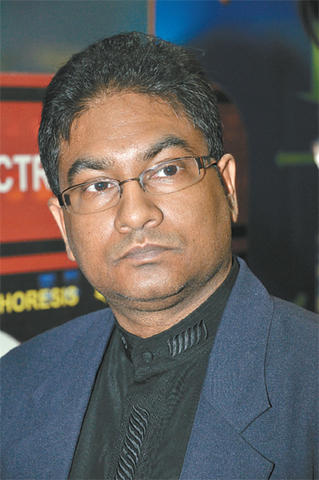(Trinidad Guardian) The half-a-billion United States dollars injected into the system by the Central Bank to ease the currency crisis in the country has already been used up by the business community.
On October 29, Minister of Finance Colm Imbert mandated that some US$500 million be immediately injected into the banking system.
The massive injection was expected to clear existing trade credit and also ease some of the currency crunch being experienced by private citizens and small businesses; hardship which many argued was caused by the new foreign exchange system which was introduced last year.
The injection was also meant to clear the way for the smooth return to the old system of purchasing currency, which Imbert mandated Central Bank Governor Jwala Rambaran to reimplement last month due to the issues with the new system.

However, the Sunday Guardian has been reliably informed that the majority of that money has already been soaked up by the big business sector, leaving private citizens and small business owners still scrambling to access US dollars.
Visits by the Sunday Guardian to several banks throughout T&T last week revealed that customers and small business were only being afforded US$200 per day. Upset customers who called the Central Bank about their woes were merely directed back to commercial bank branch managers if they hoped to be allowed to buy more US.
One bank executive, speaking under the condition of anonymity for fear of victimisation, explained that “trade creditors” were responsible for the quick absorption of the US$500 million injected into the system last month. She said the concern for currency now stemmed from the fact that the quick absorption meant little ease to the daily hassle faced by the banks’ clientele.
“The money is gone,” she said.
“If you go to stores, high-end stores, you would see where the money is.
“It has been used by business owners to stock stores, but the US injected into the system is just not coming back into the country. We are just not earning enough of it.”
Trinidad and Tobago Manufacturers Association (TTMA) president, former senator Rolph Balgobin, agreed that the money was already utilised to pay off existing debts incurred by the business community. He said, however, that the TTMA was not concerned about the shortage affecting businesses.
“The US$500 million injection was to clear the existing overhang in the system. Once that was cleared up, even with the implementation of the old system of allocation, it would still take some time before it would ease the need for the US currency,” he told the Sunday Guardian.
Apart from the fact that buyers can now only access US$200 per day through the legitimate banking system, they are also doing so at an increased exchange rate of US$1 to TT$6.43. The currency crisis has, however, also now facilitated the growth of a black market exchange trade, with purchasers being offered the now scarce US currency at a TT$7 rate.
According to RBC’s October 2015 Caribbean Economic Report, local business owners and private citizens accessed some US$695 million in October 2015 alone, meaning that the total amount of US injected into the local banking system had reached unprecedented figures by the end of October.
The RBC report stated that the year-to-date total was now just under US$2.5 billion, which signalled “an increase of just over US$1.0 billion or 73 per cent over the same period last year.”
When it released the US$500 million on October 29, the Central Bank was reported as saying that T&T’s net official reserves remained at US$10.1 billion, which it said was equivalent to almost one year’s worth of imports.
DOMA boss concerned
Head of the Downtown Owners and Merchants Association (DOMA) Gregory Aboud said he too understood the business absorption took the majority of the latest injection, leaving private citizens in difficulty.
“It helped dissolve the existing backlog, queued among commercial interests and the business community,” Aboud said.
“But it seems now that another queue has developed and indeed that private citizens are still experiencing tremendous difficulty in accessing foreign exchange.”
Aboud said, however, that only rational and frank national discussions would help the country better understand the currency crisis facing the country.
“Now it seems for some reason that the exchange rate has come to be known as a sort of economic barometer for measuring the performance of regional governments. We do not know if that phenomena is at work in T&T, but we do know that any shortage and scarcity points to a discussion regarding the price of the commodity,” Aboud said.
The Central Bank, which has now fully reverted to the original allocation method, is expected to provide a full analysis on the operations of the FX market early next month.
The Sunday Guardian texted Imbert seeking clarification on where the injection went and if the currency crisis could be rectified before the very busy Christmas season but was unable to get an explanation from him.
But the Central Bank said it has been receiving reports from the commercial banking sector on the daily movement of the foreign exchange (FX) in the system since its injection.
“The US$500m intervention was mainly to settle trade related transactions,” communications manger Charlene Ramdhanie explained in an email exchange.
She said that the free market system governing banking in T&T means that commercial banks can use their own discretion on who and how much to sell when approached by a would-be buyer.
“Central Bank does not determine what FX amount customers receive, when they receive FX/who gets FX…Apart from our intervention, commercial banks receive FX from the energy companies, other companies and the public which can be used to meet demand,” she said.









